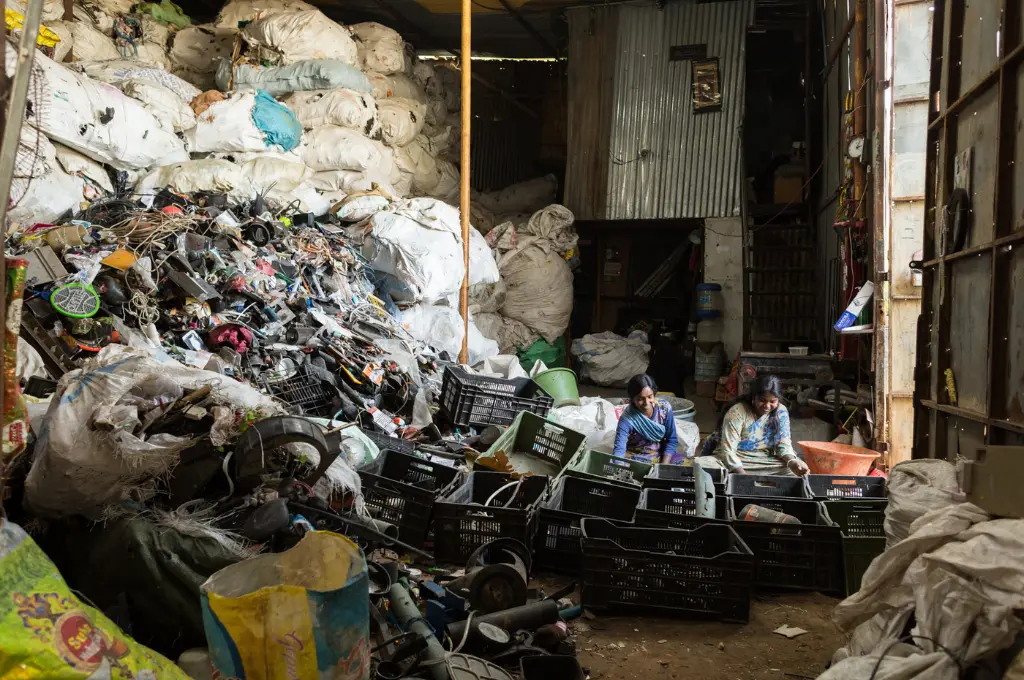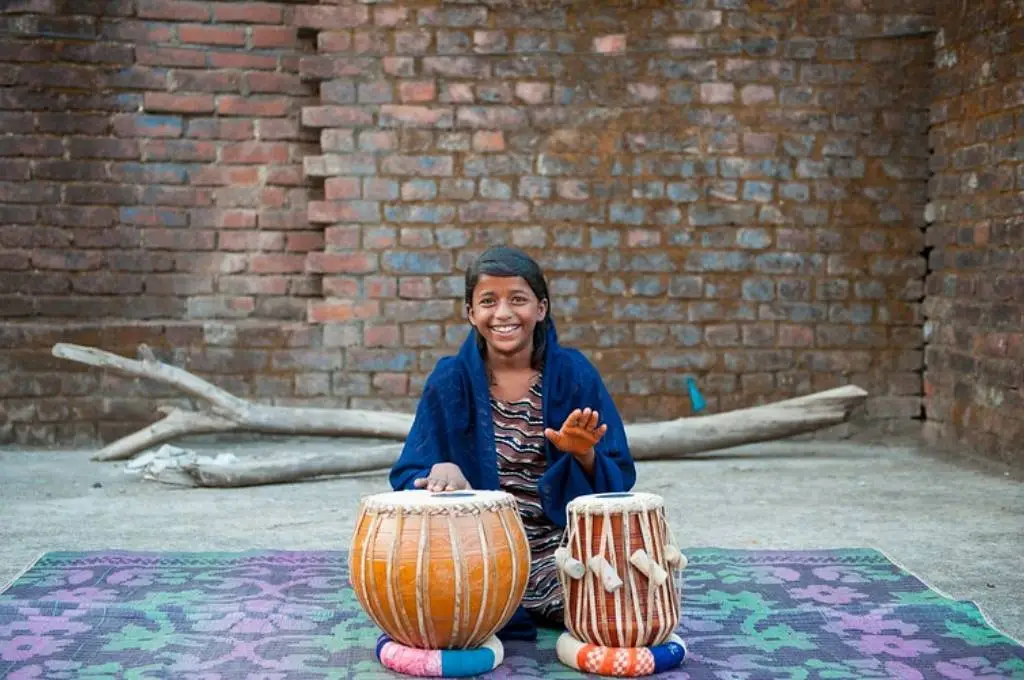Since 2014, more than 60 lakh household toilets and five lakh community toilets have been constructed in urban India, under the Swachh Bharat Mission (SBM). The scale of this exercise is unprecedented. The challenge now is continually maintaining these toilets, emptying their septic tanks, and treating their effluent. These are not fundamentally technical challenges, but ones of staffing and skill-building.
Simultaneously, there have also been efforts across cities to create systems to enhance skilling and employment opportunities for the urban poor. Since 2013, the National Urban Livelihoods Mission (NULM)—a flagship mission of the Ministry of Housing and Urban Affairs (MoHUA)—has been federating groups of urban poor women into self-help groups (SHGs) and creating opportunities that provide them access to skill building, livelihood opportunities, and affordable credit.
For SBM, the challenge was finding adequately skilled operators or individuals who could maintain toilets. Without them the investments made to promote behaviour change actions that encourage toilet use were proving futile. NULM, on the other hand, was keen to explore alternate livelihood opportunities for its communities. Meanwhile, sanitation work continued to be high-risk, low-income, and caste-based.
The advantages of working together
To leverage these programmes to support each other, and to encourage inclusivity, community ownership, and participation in the urban sanitation life cycle, the MoHUA introduced the NULM-SBM Convergence Guidelines in 2018. Urban Management Center (UMC), where we work, collaborates closely with MoHUA as their Technical Support Unit, and was involved in conceptualising these guidelines.
The guidelines aim to provide realistic and actionable targets for Urban Local Bodies (ULBs) that are backed by regular support and guidance from the mission management units of both programmes.

For example, under NULM, cities were advised that 10 percent of their SHGs1 should comprise of sanitation workers and other vulnerable communities. Under the SBM, cities are given marks in the annual Swachh Survekshan (Cleanliness Survey)2 to engage SHGs in the operation and maintenance of public and community toilets. The guidelines also elaborated on how to make occupations—such as the recovery of recyclables from waste and the management of composting plants—safe, professional, and formal. These activities were already major deliverables under SBM, and would now lead directly to livelihoods within NULM—a win-win for both. By using community-based platforms such as SHGs, ULBs can gain the advantages that come with outsourcing daily operations, while SHG members are empowered financially.
SHGs have demonstrated that, with training and education, they exceed the standards expected of private operators or contractors.
SHGs have demonstrated that, with training and education, they exceed the standards expected of private operators or contractors. As members of the community, they go beyond their contractual responsibilities and have become champions of Open Defecation Free (ODF) cities. Take the case of Sambalpur in Odisha. Members of the Maa Janani SHG kept track of those who didn’t use the community toilet and nudged them on toilet usage. They also improved toilet maintenance, ensuring the sustained ODF status of the community. In the city of Warangal, in Telangana, a transgender women’s SHG group took on the task of managing a cluster of community toilets. As a collective, they were able to take on significant work and ensure stable incomes for themselves, while gaining acceptance within their communities.
This procurement model has also transformed hazardous work that takes place at material recovery facilities and composting plants. When cities award contracts for hazardous work, they include the cost of Personal Protective Equipment (PPE) for workers. In spite of this, in some cases, labour contractors don’t provide the appropriate quantities and standards of equipment. In other cases, even a well-meaning supervisor may find it difficult to ensure that workers use the PPE regularly. For instance, worksites often have a culture of toxic masculinity that may lead to peer pressure to not wear PPE. The inherent mistrust between workers and employers makes it difficult for a supervisor to break these cycles. However, when workers themselves run the enterprise, they can transparently see how much PPE they must procure for their own safety and enforce usage among themselves. We have seen that when SHGs take on this work, they perform it more safely, and with higher profit levels.
Paths forward
While incorporating the SHG model in sanitation-based livelihoods has demonstrated clear successes, there are challenges to scaling it. A study conducted by UMC in 2020 examined how SHGs have been contracted in 23 cities across six states. The results clearly showed that where SHGs have been hired, they have been appointed directly by the ULBs, rather than going through the process of bidding or tendering for contracts. This is mostly because calls for bids still require potential bidders to have high turnovers, even when the work is small and could easily be done by an independent SHG.
Inclusive open bids allow SHGs to compete with traditional private sectors organisations on merit.
For this to change, rather than relying on direct awards, ULBs need to adopt clauses that allow SHGs to fulfil alternative criteria to qualify for the bidding process. Inclusive open bids allow SHGs to compete with traditional private sectors organisations on merit, and on all works where they choose to be engaged. Open bids also need to be made simpler and should be based on the scale and sector for which procurement is being done. For instance, community toilets can always be procured with individual bids, shorter contract terms, and simpler eligibility conditions. Until SHGs become mature enterprises, livelihoods supporting organisations will need to handhold them to navigate the procurement and the subsequent operational processes.
SHGs must also be strengthened as a competitive alternative to private operators. We need to ensure that when SHGs are engaged they are not seen as inherently inferior to an operator, but instead as partners in the process, who are worth the same value. Here are four key interventions to ensure that SHG members can access dignified and sustainable sanitation livelihoods:
1. Continued capacity building
State governments need to place greater emphasis on Entrepreneurship Development Programmes3 (EDP), not only as one-time trainings, but as ongoing support systems for SHGs engaged in creating livelihoods. EDPs are already a significant activity under the NULM and there are also many nonprofits working in this sector.
Training should allow SHGs to interact, share experiences, and receive recommendations on accounting, invoicing, negotiation, hiring, vendor selection, and other operational details. This will help them navigate the confounding administrative and technical challenges of sanitation. The Dalit Chamber of Commerce (DICCI) has shown us how this can be done through their Apna Doorstep service, which is essentially a help desk for sanitation entrepreneurs.
2. Disseminating best practices
It is important that state governments publish model operating procedures, bids, and contracts for cities to use, that consider the needs of SHGs. The low capital and credit levels of small entrepreneurs means that they need regular payments, clear delineation of expenses and financial responsibilities, and mechanisms to request advance payments. Cities that have experimented with SHGs are aware of the value they can add. However, learning to accommodate their interests is a distinct learning curve. Model contracts and clauses go a long way toward accelerating that process and protecting SHGs in the meantime.
3. Ensuring regular payments
For SHGs, the biggest challenge by far is the inconsistent payment cycle. They do not have any internal capital, and hence cannot absorb payment delays from city governments. A one- to two-month delay, combined with operating expenses are enough to render an SHG destitute. Defaulting on their contract even in such circumstances would make them responsible for further penalties. City accounting departments need to be cognisant of this and build systems to avoid these delays.
4. Identifying private and public sector champions
In any initiative, it is important for individuals and organisations to take stands where they can. Stronger networks connecting these champions also magnify their impact. Platforms such as the National Faecal Sludge and Septage Management Alliance (instituted in 2016, by a consortium of 31 organisations) play an important role. They have the capacity to identify and disseminate best practices from champion states and organisations and rally for them. Further, they can collectively and collaboratively advocate for their adoption at scale with policy stakeholders regionally, nationally, and internationally. Private sector organisations also need to recognise their role and consider engaging SHGs in operations and maintenance activities.
The pertinent question is: Who stands to gain from the adoption and proliferation of a community involvement model? Through this bottom-up approach, the beneficiary community, the participant community, and the government are all positioned to make significant progress towards achieving Sustainable Development Goal 6: Clean Water and Sanitation. To do this in an inclusive manner, multifaceted and coordinated action is indispensable at the ULB, community, and national policy level. With COVID-19 revealing the stark realities of urban India, there is an acute need to restructure urban sanitation servicing and operations for, by, and with the community that it is meant for.
—
Footnotes:
- Self-help groups (SHGs) are one of the major community-level mechanisms of NULM. They are collectives of community members, generally women, that are given support, access to capital for internal lending and microfinance as a group.
- The Swachh Survekhsan is a quarterly ranking/survey of Indian cities where they are assessed for cleanliness and ranked according to various metrics. Once a year, the cleanest cities of the country receive awards for their performance.
- EDPs are a form of soft skills training that are conducted for individuals interested in entrepreneurship. Typically, they consist of a single 3-hour lecture on the importance of things like accounts. We have found this model to be ineffective. It is far more effective when SHG members are given small doses of ongoing support on operational challenges such as raising invoices, opening bank accounts, responding to notices, and so on.
—
Know more
- Watch the SHG training videos and resources created by UMC at U-learn.in, a dedicated platform for e-learning for SHGs.
- Read about how a women’s self-help group in Odisha boosted livelihoods and household incomes, depicted through Madhubani art.
Do more
- If you represent an organisation, from the private or public sector that wants to engage SHGs for any work, please get in touch with the authors at meghna@umcasia.org.
- Consider supporting SHG entrepreneurs by purchasing their products on Flipkart, Amazon-Saheli, or directly.







